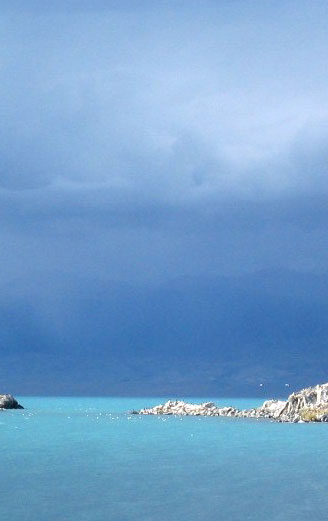Mongolia is remote, mysterious, homeland of the greatest conqueror of 13th century, Chingis khan, a country of rugged mountains, rolling steppes and Gobi Desert. Located in the landlocked plateau of Central Asia between China and Russia Siberia Mongolia covers an area of 1,566.500 sq. km, which is roughly the size of Western Europe. The total length of the country's borders is 8,158 kilometers. The country is mountainous with an average altitude of 1,500 meters above sea level. Mongolia is fabulous wide- open land of extreme climate and extraordinary natural environment. Mongolia is a land of many natural contrasts: wild forests, alpine, meadows, southern Gobi- semi deserts, vast plains and snow- covered mountains. The highest peak in Mongolia is Nairamdal Uul (4,373m- 14, 350 feet), it is located in the west of country. Many salt lakes and prairies are found throughout country, the only navigable lake is Khuvsgul is in the north of the country.
CLIMATE
Mongolia has an extreme continental climate, it lies at the hearth of Central Asia far from sea and oceans in the led of surrounding high mountains- all factors that contribute to its dry climate. Wind is more forceful in the southern regions. Precipitation exceeds 500 mm a year in the mountains, 200- 300 mm in the steppe and less than 150 mm in the Gobi. Throughout the year the skies are blue and the sun shines for over 250 days. There are four distinct seasons, each with its own special attraction.
PEOPLE
Within the city, the nomadic culture of the countryside mixes easily with the modern urban culture of Ulaanbaatar and the two often combine without fuss. Most Mongolians now live in urban centers, 2, 400 million people's only 35- 40 %live as nomads or semi- nomads away from towns and they are almost totally dependent on animal herding for their livelihood. Nomadic people are by nature self- assured and proud, they are survivors in an extremely difficult climate and harsh land.
THE GER - NATIONAL DWELLING
Nomadic lifestyle over the centuries has principally depended on this classic, collapsible round tent. The size of a ger can vary, there are gers with 4, 5, 6, 8, and 10 walls according to this number the ger is called small and large. The ger's durability, lightness and low cost are all points of tremendous advantage to the nomads. It combines coolness in summer and warmth available materials, it can be quickly assembled or taken to pieces, and is easily transported from place to place on camelback or, more often that not these days, by truck.
FOOD
Over the centuries, Mongolian nomads have developed a number of unique dairy products, which include different types of yoghurt, cottage cheese, dried curds and drinks like fermented mare's milk. Meat, usually mutton, is eaten in the cold season and is dried during summer. Beef, also eaten much, no poultry and fish. These days you can eat in international restaurants and cafes many nations food, like Chinese, Italian, French, Korean, Japanese and so on.
VISA
Most foreign visitors to Mongolia require visa, but it is not a problem to get it if your documents are completed. Make sure your passport is valid at least 6 months from the date of arrival in Mongolia. Visas are issued at the Mongolian Embassy, Consulate or Honorary Consulate in your country. If you combine a program in Mongolia with Russia or China, visas needed for these countries as well. The tourist visas can be extended up to 30 days. Visitors staying more than 30 days must register with the police.
POST AND TELECOMMUNICATION
Stamps and post card can be bought in Central Post Office and everyplace tourists visit. It is possible to call abroad from the major hotels. IDD cards calls much cheaper and available to make calls from regular telephones. Internet cafes almost in everywhere. Mobile telephone service is improving, in every province center and even in some remote areas you can be communicate with. /GSM and CDMA system companies/







 Top
Top





